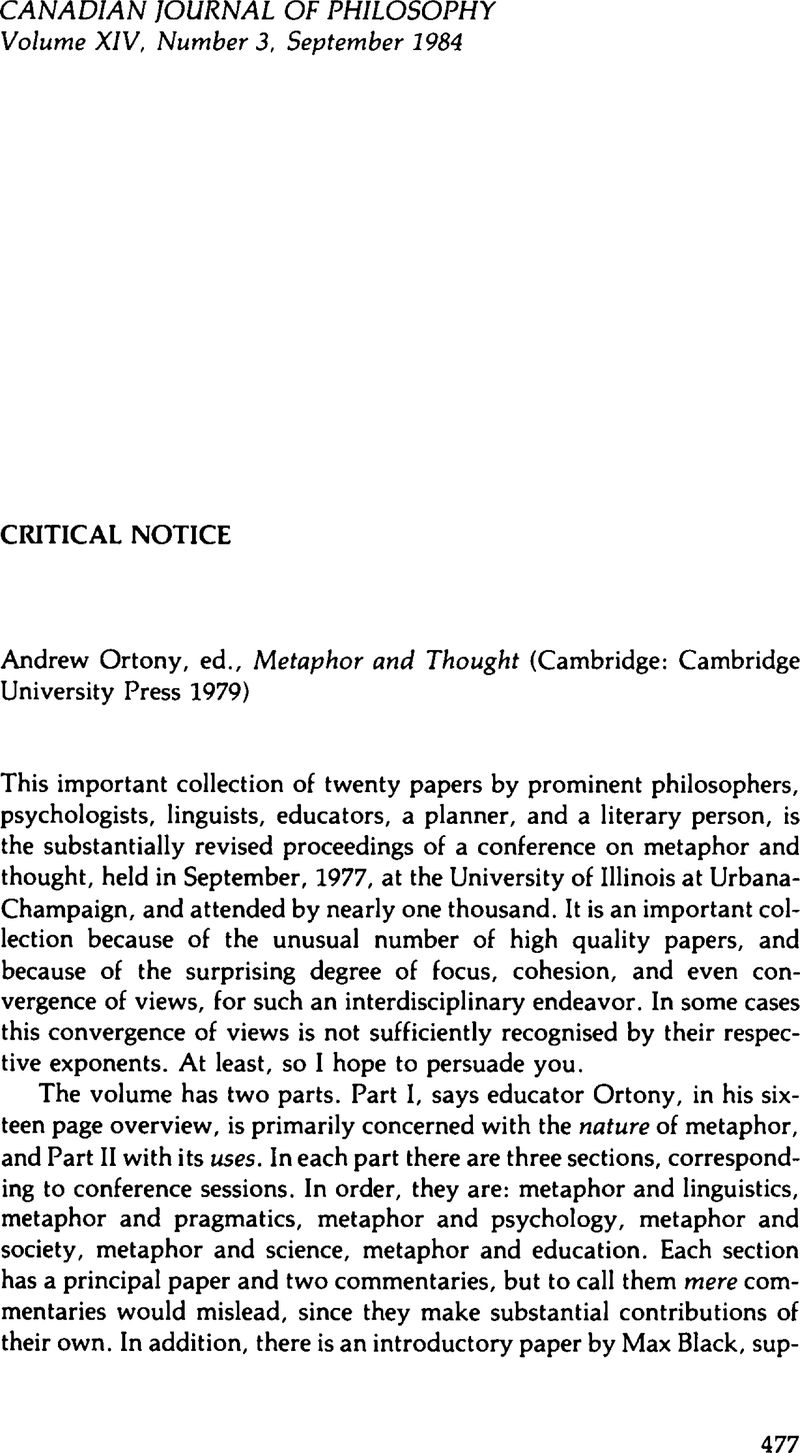No CrossRef data available.
Article contents
Andrew Ortony ed., Metaphor and Thought (Cambridge: Cambridge University Press 1979)
Review products
Published online by Cambridge University Press: 01 January 2020
Abstract

- Type
- Critical Notice
- Information
- Copyright
- Copyright © The Authors 1984
References
1 M. Black, Metaphor: in Black, M. Models and Metaphors (Ithaca, NY: Cornell University Press 1962)CrossRefGoogle Scholar
2 Here and elsewhere I will use Black's terminology of primary and secondary subjects, rather than introduce related terminology like ‘tenor’ and ‘vehicle’ or ‘focus’ and ‘frame,’ etc. A feature of Black's as opposed to the other terminology is, however, that it is in the material rather than the formal mode. This must be taken into account.
3 Cf. my ‘Explaining Metaphorical Interpretations,’ Poetics. 9 (1980) 441-56.
4 Bergmann, M.. ‘Metaphorical Assertions,’ Philosophical Review, 91 (1982) 229-45CrossRefGoogle Scholar
5 Beardsley, M. ‘Metaphorical Senses,’ Nous, 12 (1978) 3–16CrossRefGoogle Scholar
6 P. 69. Interestingly, Cohen also argues (67) that we do not have a ‘Gricean option’ of cancelling an ‘implicatured’ feature, because if + INTENTIONAL is merely implicatured in (5), then what is the force of ‘because'?
7 P. 75. Some critics of Cohen find this generous construal of semantic features question begging; e.g., Beardsley and Bergmann.
8 Ortony, A. ‘Why Metaphors are Necessary and Not Just Nice,’ Educational Theory, 25 (1975) 45–53CrossRefGoogle Scholar
9 It would be interesting to compare and contrast Paivio's dual-coding concept with Miller's notion of a textual concept. At least this much seems probable: Miller's theory of metaphor comprehension stands up to Ortony's theory of metaphor function as well as Paivio's.
10 It is surprising that, apart from Ortony's brief conjectures and a few scattered sentences, this is the only attempt in this large volume on metaphors to explain the distinction.


